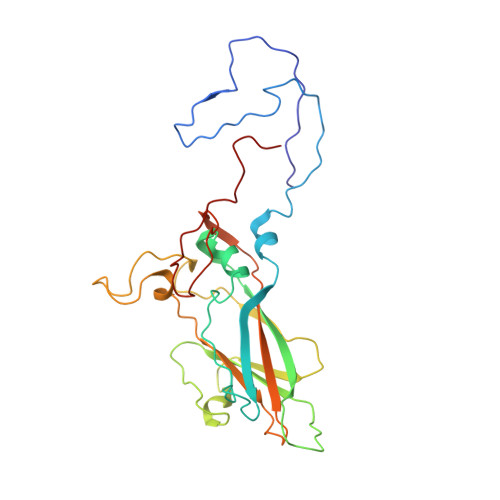Identification of a conserved virion-stabilizing network inside the interprotomer pocket of enteroviruses.
Flatt, J.W., Domanska, A., Seppala, A.L., Butcher, S.J.(2021) Commun Biol 4: 250-250
- PubMed: 33637854
- DOI: https://doi.org/10.1038/s42003-021-01779-x
- Primary Citation of Related Structures:
6ZCK, 6ZCL, 6ZMS - PubMed Abstract:
Enteroviruses pose a persistent and widespread threat to human physical health, with no specific treatments available. Small molecule capsid binders have the potential to be developed as antivirals that prevent virus attachment and entry into host cells. To aid with broad-range drug development, we report here structures of coxsackieviruses B3 and B4 bound to different interprotomer-targeting capsid binders using single-particle cryo-EM. The EM density maps are beyond 3 Å resolution, providing detailed information about interactions in the ligand-binding pocket. Comparative analysis revealed the residues that form a conserved virion-stabilizing network at the interprotomer site, and showed the small molecule properties that allow anchoring in the pocket to inhibit virus disassembly.
Organizational Affiliation:
Faculty of Biological and Environmental Sciences, Molecular and Integrative Bioscience Research Programme, University of Helsinki, Helsinki, Finland.

















